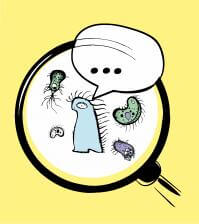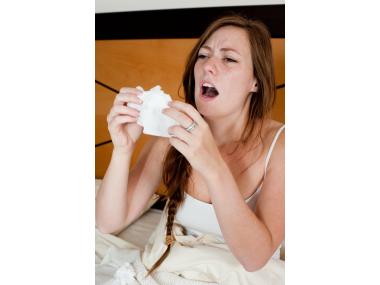5 Spots Where Germs Hide and How to Get Rid of Them
Germs hide in these five spots. But this flu season, learn to get rid of them.
As we enter cold and flu season we strive to take as many preventive measures as possible to keep our families and ourselves healthy. One focus is on hand washing to prevent germs. Cleanliness is your first defense against the germs that make kids sick. Kids come into contact with a lot of germs all the time, so it’s important to teach your children to properly wash the fronts, backs, and in between all the fingers, and scrub up the arms to the elbows with soap and warm water. A great rule of thumb is to practice singing the alphabet song while your kids wash their hands.
Handwashing is extremely important to keep germs at bay but there are also other hidden areas in your home and elsewhere that germs lurk. Here are 5 prime spots that germs hang out and how you can keep them away from your family.
-
Toothbrush holders. In your normal routine, you may forget to wash these. But remember this: they’re often placed near flushing toilets, which can send germs flying.
Tip: Scrub toothbrush holders with hot soapy water. If you use a cup or other freestanding holder, put it through the dishwasher once a week on the hot cycle.
-
Knobs and handles. Items people touch frequently tend to get germy, and this includes the handles on shopping carts.
Tip: Clean doorknobs, toilet handles, faucets, etc., often with hot soapy water or disinfecting wipes—especially if someone in the household is ill.
-
Pet Bowls. The National Sanitation Foundation (NSF) found pet bowls to be the fourth most germ-filled place in the house.
Tip: Pet bowls should be washed with warm, soapy water daily, and disinfected at least once a week with a bleach solution. Add ½ cup of regular bleach solution to a gallon of water and let soak for ten minutes, then rinse and let dry.
-
Kitchen Sink. Food particles from plates left to soak or rinsed from dishes on their way to the dishwasher can serve as a breeding ground for illness-causing bacteria, including E. coli and salmonella. They can get on your hands or spread to foods. Eileen Abruzzo, director of infection control at Long Island College Hospital of Brooklyn, New York, told WebMD, “Most people take steps to disinfect their toilet bowls, but few give their kitchen sink the same consideration.”
Tip: To sanitize your sink and prevent the spread of bacteria, Abruzzo recommends washing it with a solution of bleach and water once a day and then letting the solution run down the drain. Remember to remove the drain plug and clean it, too. Then wash your hands.
-
Computer Keyboard. If you eat at your computer, sneeze on your keyboard, or sit down to surf the Internet without first washing your hands, your computer keyboard could be a health hazard.
Tip: Wash your hands before and after using your computer. If you have to eat at your desk, don’t drop crumbs into your keyboard. To clean your keyboard, gently shake out the crumbs or vacuum it. Gently wipe the keys with alcohol or bleach wipes and don’t forget to wipe the mouse.
For more tips, visit the Mighty Mommy page.







